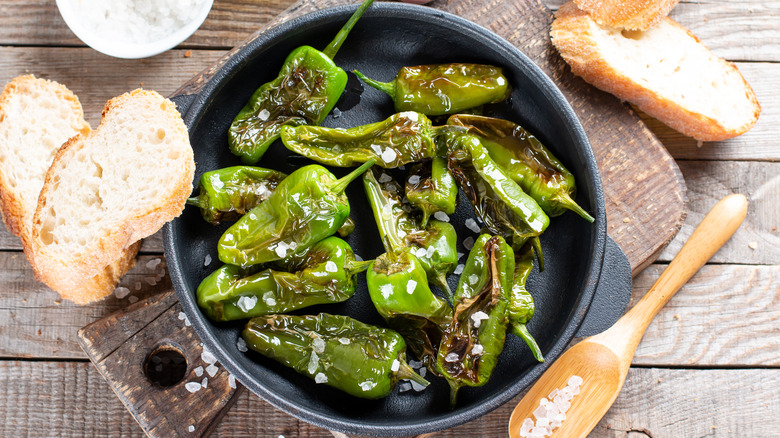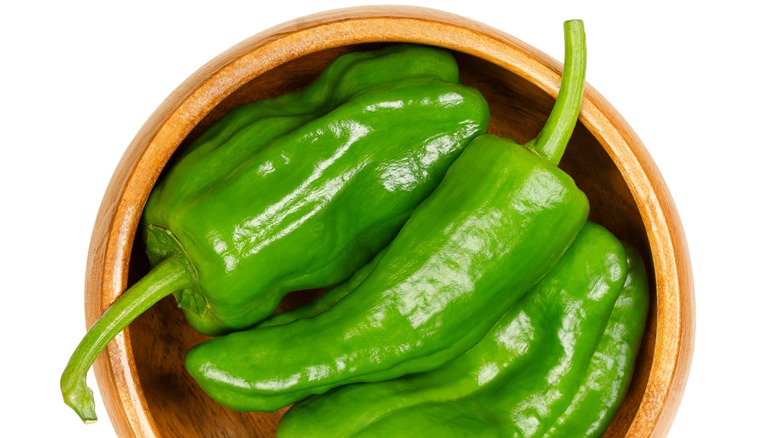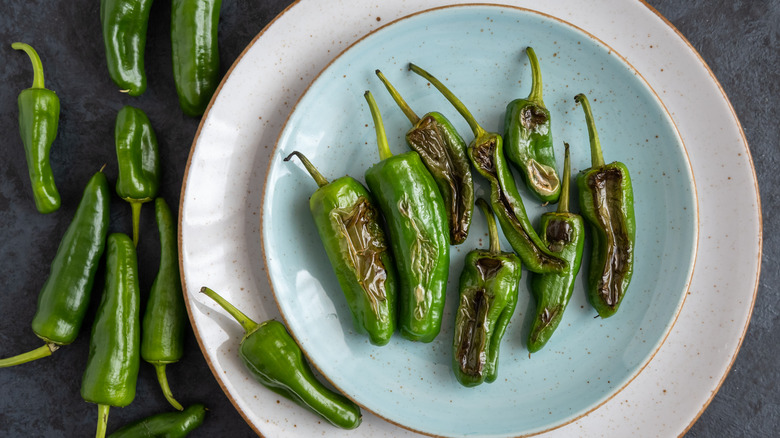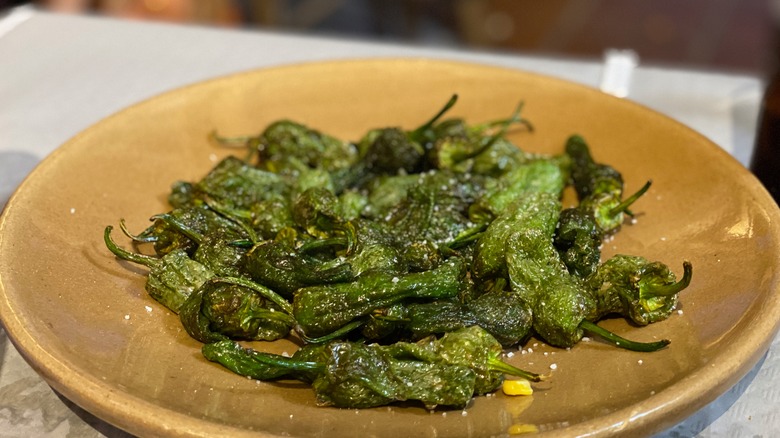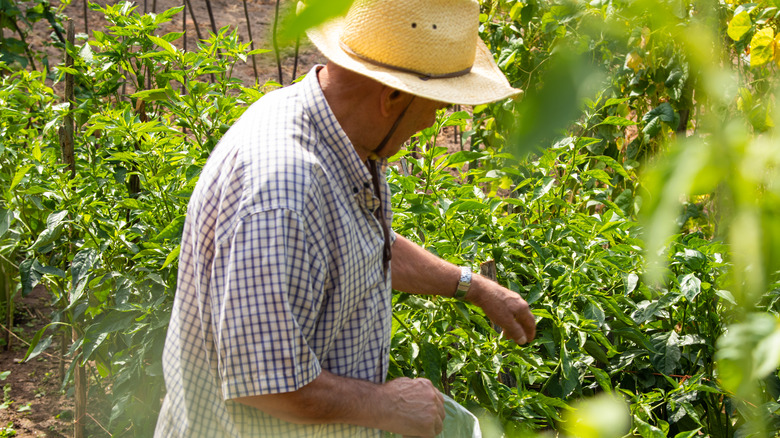Padrón: The Spanish Peppers That Are Spicy By Chance
Peppers boast an incredible biodiversity, cultivated all across the globe. A history of being spread along trade routes and then bred according to local preferences has resulted in a diverse array of varieties. From Thai bird's eye chilies to dried anchos, it can be hard to believe all of these peppers belong to one species.
In Spain, the beloved regional varietal is the small, green Padrón. First introduced by Spanish monks or Conquistadors in the 16th century, the pepper is now a celebrated component of Spanish cuisine. Fried and served in tapa bars across the country, the pepper boasts an addictive savory flavor. Plus, it comes with a fun gamble — a small ratio of the peppers has a spicy kick. Easy to prepare and perfect with a beer, few ingredients stand out as such a delicious dish when served on their own. Let's dive into what Padrón peppers are all about.
What are Padrón peppers?
Padrón peppers are specifically a Spanish-grown variety that belongs to the Capsicum annuum species. Close relatives to bell, poblano, serrano, and cayenne peppers, they're one of many thousand cultivated chile types. They're typically bright green in color but can also be yellow and red. Not a particularly large chile, peppers can reach 4 inches in length but are often smaller. Visually, they have shiny sheen with many wrinkles that resemble Japanese shishito peppers. However, Padróns have a thinner body and different flavor, so don't confuse the two in a hurry.
Although grown in Mexico and the U.S., the peppers are most intertwined with Spanish gastronomy. In the Iberian nation, they're typically produced in the verdant northwestern province of Galicia, centered around the town of Padrón. They're popular in tapas bars all across Spain, known with an accompanying saying — "some Padrón peppers are hot, some are not." And while heat roulette is a fun association with the pepper, they also have a delectable flavor that explains their popularity.
How do Padrón peppers taste?
Padrón peppers are typically not eaten raw since their taste really shines after heat application. Their flavor is rich and earthy, with a tad of sweetness and the occasional hit of spice. Cooking adds a smoky element since their skin is predisposed to a tasty char. Additionally, their texture turns soft after heating, but the pepper still holds — leading to a pleasant mouthfeel of dissolving after every bite. Less frequently, the pepper is also dried and turned into a powder. In this form, the sweetness is accentuated, but a mild heat is still present.
When it comes to whole peppers, the range of spice level is fairly extensive — from 500 to 2,500 Scoville units, meaning it can reach the level of kick of a mild jalapeño pepper. Amusingly, there is no way to differentiate which peppers are spicy. Such an intriguing component, combined with their delectable taste, makes them popular simply eaten on their own.
How are Padrón peppers prepared and served?
In Spain, they're typically served alongside other tapas. Their preparation is kept simple, frying the pepper in olive oil with a sprinkling of sea salt. Some chefs also spritz a bit of lemon juice for an extra tang. This straightforward cooking method is ubiquitous for good reason — fewer ingredients let the complexity of the Padrón truly shine. It's also common to stuff the pepper with cheese, usually a mix of manchego and mozzarella. While they can be baked whole in this form, pan-frying is dependably the best cooking method to achieve a pleasant char.
Padrón peppers are frequently consumed alongside huevos rotos con patatas, or fried eggs with potatoes. Alternatively, slices of manchego cheese are also a great way to chase the heat. When fried, Padrón peppers salty and fatty qualities make them a delicious bar food, meshing well with an ice-cold beer. Even if a bite does happen to be spicy, it'll still be tempting to eat more.
Where to buy and how to store Padrón peppers
The peppers are sold everywhere around Spain, in both grocery stores and local markets. However, the best place to sample the delicious Padrón is in a nearby tapa bar. Outside of the European country, they're more difficult to find, although the pepper is becoming especially popular at farmer's markets and gourmet grocery stores. Some consumers may even be able to purchase the pepper online.
To those fortunately blessed with garden space, it's easy to procure Padrón pepper seeds and grow the pepper. The plant reaches maturity after only 60 days and produces many Padróns — making harvesting enough for consumption a breeze.
Fresh peppers will last up to two weeks. It's best to keep them secured in a bag, unwashed, in the crisper drawer of the fridge. If dealing with an abundance of padróns, it's convenient to freeze the pepper for later use. In this format, they should be pre-washed since the cold pepper can be thrown directly into hot oil to be reheated.
